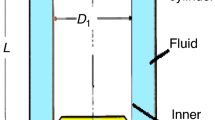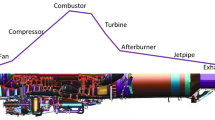Abstract
Low viscosity fluids could provide reliable lubrication for certain microelectromechanical system’s (MEMS) applications where high-sliding speeds and/or high sliding distances occur. However, while the use of low viscosity fluids leads to reduced hydrodynamic friction, high boundary friction can be a significant issue at low entrainment speeds. This article describes a series of tests of low viscosity fluids, blended with a friction modifier additive so as to provide a combination of both low hydrodynamic and low boundary friction at MEMS scales. The low viscosity fluids tested were hexadecane, low viscosity silicone oil, toluene and water. With the exception of water, the addition of the organic friction modifier octadecylamine to all these lubricating fluids produced a significant reduction in boundary friction. For a MEMS contact lubricated with silicone oil for instance, boundary friction was reduced from 0.5 to close to 0.05. The presence of the amine dissolved in the toluene had the effect of reducing boundary friction from 0.75 to 0.55; this was further reduced to 0.25 after the specimens had been immersed in the toluene-additive blend for 48 h. A water-soluble additive, diethylamine, was added to de-ionized water, at 0.1% by weight concentration. Although an initial reduction in boundary friction was observed (0.45–0.25), under these conditions the rapid onset of severe wear negated these effects. It is suggested that corrosion of silicon by water, followed by abrasion, is the cause of this accelerated wear.








Similar content being viewed by others
References
Spearing, S.M.: Materials issues in microelectroctromechanical systems (MEMS). Acta Mater. 48, 179–196 (2000)
de Boer, M.P., Mayer, T.M.: Tribol. MEMS. MRS Bull. 26(4), 302–304 (2001)
Maboudian, R., Ashurst, W.R., Carraro, C.: Self-assembled monolayers as anti-stiction coatings for MEMS: characteristics and recent developments. Sens. Actuators 82, 219–223 (2000)
Sniegowski, J.J., de Boer, M.P.: IC-compatible polysilicon surface micromachining. Ann. Rev. Mater. Sci. 30, 299–333 (2000)
Asay, D.B., Dugger, M.T., Kim, S.H.: In situ vapor-phase lubrication of MEMS. Tribol. Lett. 29(1), 67–74 (2008)
Asay, D.B., Dugger, M.T., Ohlhausen, J.A., Kim, S.H.: Macro- to nanoscale wear prevention via molecular adsorption. Langmuir 24, 155–159 (2008)
Ashurst, W.R., Carraro, C., Maboudian, R.: Vapor phase anti-stiction coatings for MEMS. IEEE Trans. Device Mater. Reliab. 3(4), 173–178 (2003)
Mehregany, M., Dhuler, V.R.: Operation of electrostatic micromotors in liquid environments. J. Micromech. Microeng. 2, 1–3 (1992)
Deng, K., Ramanathan, G.P., Mehregany, M.: Micromotor dynamics in lubricating fluids. J. Micromech. Microeng. 4, 266–269 (1994)
Ku, I.S.Y., Reddyhoff, T., Choo, J.H., Holmes, A.S., Spikes, H.A.: A novel tribometer for the measurement of friction in MEMS. Trib. Int. 5–6, 1087–1090 (2010)
Stackowiak, G.W., Batchelor, A.W.: Engineering tribology, Second edn. Butterworth Heinemann, Need City (1993)
Mortier, R.M., Orszulik, S.T.: Chemistry and technology of lubricants, Second edn. Blackie Academic and Professional, London (1997)
Zhu, X., Ohtanib, H., Greenfield, M.L., Ruths, M., Granicka, S.: Modification of boundary lubrication by oil-soluble friction modifier additives. Tribol. Lett. 15(2), 127–134 (2003)
Jahanmir, S.: Chain length effects in boundary lubrication. Wear 102, 331–349 (1985)
Briscoe, B.J., Evans, D.C.B.: The shear properties of Langmuir-Blodgett layers. Proc. Roy. Soc. Lond. A. 380, 389–407 (1982)
Choo, J.H., Spikes, H.A., Ratoi, M., Glovnea, R., Forrest, A.K.: Friction reduction in low-load hydrodynamic lubrication with a hydrophobic surface. Trib. Int. 40, 154–159 (2007)
Choo, J.H., Glovnea, R.P., Forrest, A.K., Spikes, H.A.: A low friction bearing based on liquid slip at the wall. Tribol. Trans. ASME J 129, 611–620 (2007)
Graf, D., Grundner, M., Schulz, R.: Reaction of water with hydrofluoric acid treated silicon (111) and (100) surfaces. J. Vac. Sci. Technol. A 7(3), 808–813 (1988)
Lehmann, V.: Electrochemistry of silicon: instrumentation, science, materials and applications, First edn. Wiley-VCH, Wienheim (2002)
Law, T.J.: Interaction of oxygen with clean silicon surfaces. J. Phys. Chem. Solids 4, 91–100 (1958)
Gavrilenko, V.P., Novikov, Yu.A., Rakov, A.V., Todua, P.A.: Measurement of thickness of native silicon dioxide with a scanning electron microscope. Proc. SPIE 7405, 7–8 (2009)
Acknowledgments
The financial support of the UK Engineering and Physical Sciences Research Council (EPSRC) under Grant No. EP/D04099X is gratefully acknowledged. The authors also wish to thank Mr. Robert J. Hergert of the Optical and Semiconductor Devices Group at Imperial College for his help with the design and fabrication of the test devices used in this work, and other members of the Optical and Semiconductor Devices and Tribology Groups at Imperial College for their assistance.
Author information
Authors and Affiliations
Corresponding author
Rights and permissions
About this article
Cite this article
Reddyhoff, T., Ku, I.S.Y., Holmes, A.S. et al. Friction Modifier Behaviour in Lubricated MEMS Devices. Tribol Lett 41, 239–246 (2011). https://doi.org/10.1007/s11249-010-9704-3
Received:
Accepted:
Published:
Issue Date:
DOI: https://doi.org/10.1007/s11249-010-9704-3




